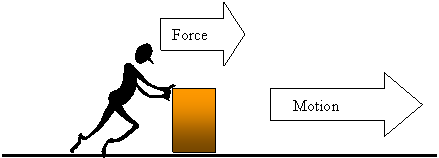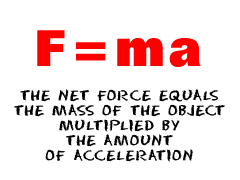However, only the car is providing the force for the forward motion, not the van. Since the car only weighs 1500 kg, why doesn't it move off at 5 m/s/s ?
This is where Newton's 3rd law comes into play. Simply stated, it is:
For every action there is an equal on opposite reaction.
Firstly we look at the combined system. Using Newtons 2nd Law we calculate this correctly.
BUT.....
- When we look at the 2 parts of this system individually, we can say that the car has a force of 7500 N exerted by the engine to the right which will drive it forward.
- If the caravan is accelerating at 3 m/s/s, it must have a force of 3000 N being exerted on that.
If we then apply Newtons 3rd law, the caravan must be exerting a force equal and opposite to the car (that is 3000 N from right to left, equal and opposite to the direction of the motion), the net force is now
7500 N - 3000 N = 4500 N
So when we apply this quantity of force with the mass of the car, you can now see that the acceleration of the car will be 3 m/s/s.
Just goes to show how brilliant Newton was.

Newton's 3rd law applies not only to pulling but pushing forces as well. So if we were pushing a red Ferrari with our own red Ferrari, the car being pushed would exert and equal and opposite force on the car doing the pushing. When something is suspended the rope etc exerts an equal and upward force on the object hanging from it.
We have all probably experienced Newton's 3rd law when we have pulled on a rope, pushed a bike or something else you have ridden or even pushed on the wall. The classic example is when a person pushes on a wall while standing on a skateboard.

Commonsense will tell you you will move away from the wall. But this is because as they push on the wall, the wall pushes back. When you consider the direction they travel in relation to the force they apply, Newton's 3rd Law again makes good sense.









KinCirc/KinCircPics/Banked/banked2b.jpg)












